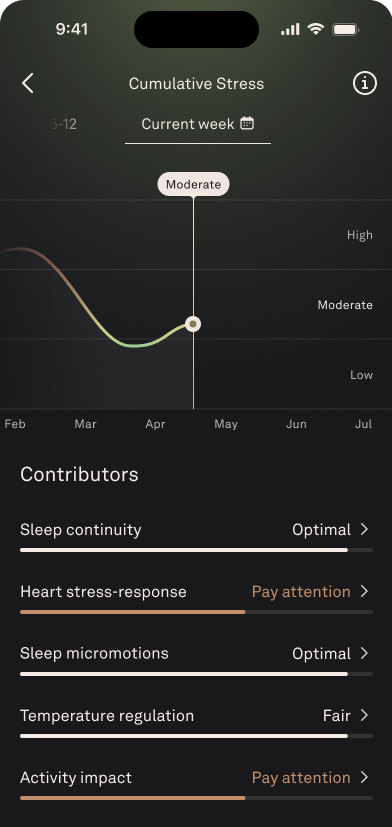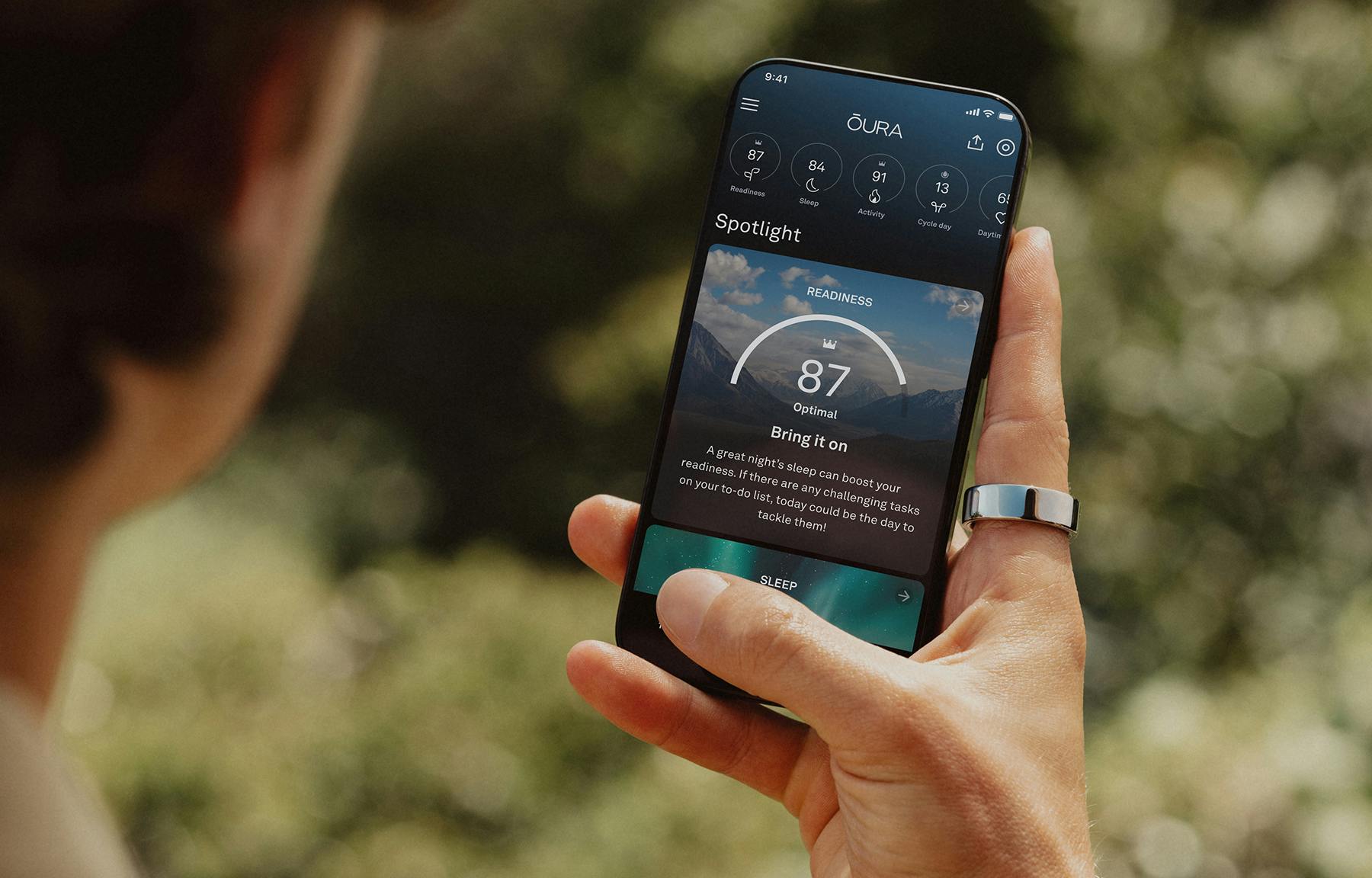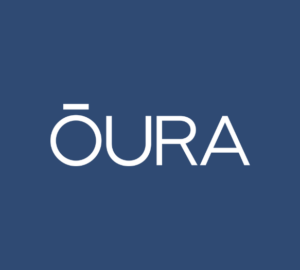We’re excited to announce a powerful new way to understand your body’s response to life’s pressures with the launch of Cumulative Stress, now available to Oura Ring Gen3 and Oura Ring 4 Members.
The new Cumulative Stress feature rounds out Oura’s suite of stress-tracking tools:
- Daytime Stress monitors stress throughout your daily activities.
- Resilience tracks your ability to recover from stress.
- Now, Cumulative Stress helps you understand the impact of chronic stress on your health and prevent burnout.
What is Cumulative Stress?
Cumulative Stress is a new feature designed to help you understand how your body accumulates and responds to sustained stress over time. Considering 31 days’ worth of Oura data, it evaluates the effects of accumulated stress on your sleep metrics, stress baseline, and activity levels.
| Member Tip: Find the new Cumulative Stress feature in the My Health tab. |
It’s important to remember that not all stress is detrimental. Physiological stress, which Oura measures, is the body’s neuroendocrine response to internal or external stressors. This response enables the body to adapt and function effectively in changing conditions, aiding survival.
There are two main types of stress: acute stress, an immediate stress reaction that can be either positive or negative, and chronic stress, a long-term stress response that has negative impacts on your well-being. Chronic stress has been associated with health issues like anxiety and depression, impaired cognitive function, and heart disease, among others.
LEARN MORE: Reframing Stress: The Difference Between “Bad” and “Good” Stress
What Does Cumulative Stress Evaluate?
 Unlike simple estimates or aggregated stress scores, Cumulative Stress gives you an objective, physiological signal of long-term strain. This powerful insight is drawn from five key contributors that reveal how well your body is managing and recovering from constant strain:
Unlike simple estimates or aggregated stress scores, Cumulative Stress gives you an objective, physiological signal of long-term strain. This powerful insight is drawn from five key contributors that reveal how well your body is managing and recovering from constant strain:
- Sleep Continuity: measures how frequently you are awakening or tossing and turning
- Heart Stress-Response: a measure of HRV and resting heart rate
- Sleep Micromotions: measures involuntary movements or muscle twitches during sleep
- Temperature Regulation: measures shifts in overnight skin temperature
- Activity Impact: measures how physical exertion affects your recovery from stress
By showing you the “hidden toll” of unmanaged stress, this feature empowers you to make changes before that strain leads to exhaustion, burnout, or illness.
| Member Story: At the brink of burnout, this entrepreneur turned to Oura to help identify his stressors and figure out which interventions worked best to lower his stress and improve his health. |
Your New Stress Management Dashboard
To make this data easy to use, we’ve launched a new Stress Management view in the MyHealth tab. This central dashboard brings together all three tools—Daytime Stress, Resilience, and Cumulative Stress—into one cohesive place.
This integrated view gives you a complete picture of your body’s short-term and long-term stress patterns, making it simple to spot trends, prioritize recovery, and maintain balance over time.
- Daytime Stress helps you understand how your body responds to acute stress throughout your day, providing insights to when your body stepped up to support your survival or boosted your performance (positive and negative stress).
- Resilience describes your ability to endure and recover from acute stress, and reflects your stress-recovery balance. A shift in Resilience may also predict a corresponding shift in Cumulative Stress.
- Cumulative Stress tracks your overall status of prolonged physiological stress, helping you understand if negative stress has started to build up, or track your progress as you are recovering from chronic stress.
READ MORE: How to Boost Your Resilience, According to Oura Members











